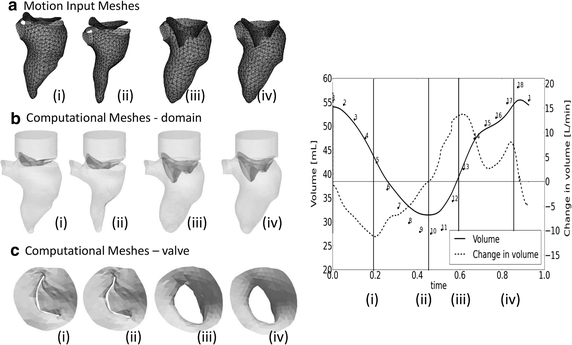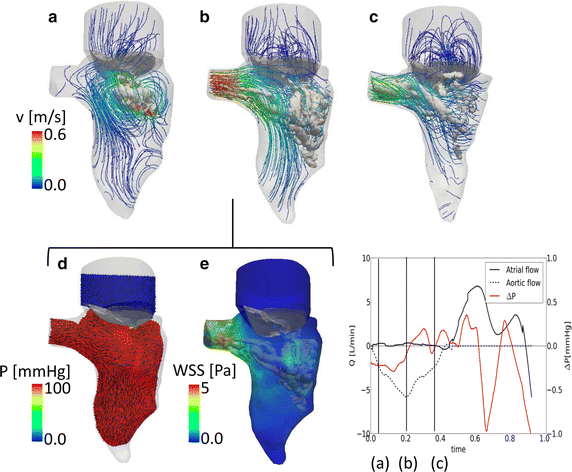Patient-specific CFD simulation of intraventricular haemodynamics based on 3D ultrasound imaging
- PMID: 27612951
- PMCID: PMC5016944
- DOI: 10.1186/s12938-016-0231-9
Patient-specific CFD simulation of intraventricular haemodynamics based on 3D ultrasound imaging
Abstract
Background: The goal of this paper is to present a computational fluid dynamic (CFD) model with moving boundaries to study the intraventricular flows in a patient-specific framework. Starting from the segmentation of real-time transesophageal echocardiographic images, a CFD model including the complete left ventricle and the moving 3D mitral valve was realized. Their motion, known as a function of time from the segmented ultrasound images, was imposed as a boundary condition in an Arbitrary Lagrangian-Eulerian framework.
Results: The model allowed for a realistic description of the displacement of the structures of interest and for an effective analysis of the intraventricular flows throughout the cardiac cycle. The model provides detailed intraventricular flow features, and highlights the importance of the 3D valve apparatus for the vortex dynamics and apical flow.
Conclusions: The proposed method could describe the haemodynamics of the left ventricle during the cardiac cycle. The methodology might therefore be of particular importance in patient treatment planning to assess the impact of mitral valve treatment on intraventricular flow dynamics.
Keywords: CFD model with prescribed moving boundaries; Intraventricular flow; Patient-specific modeling; Real-time transesophageal ultrasound images.
Figures





References
MeSH terms
LinkOut - more resources
Full Text Sources
Other Literature Sources
Miscellaneous

